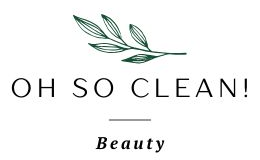
Hey there! In today’s post, let’s dive into one of the most epic showdowns in the world of beauty: Bakuchiol vs. Retinol. These two heavyweights promise to fight the good fight against wrinkles and fine lines, but they have some key differences. If you’re wondering which one to add to your skincare routine, stick around – we’re about to spill the tea!
What Are They, Anyway?
In the red corner, we have Retinol, the OG of anti-aging. Retinol is a derivative of vitamin A and has been the star of the show for ages. It works its magic by boosting collagen production, improving skin texture, and reducing wrinkles. But, it can also bring some sidekicks to the party – redness, peeling, and sensitivity.
In the blue corner, meet Bakuchiol, the new kid on the block. Bakuchiol, extracted from the Psoralea corylifolia plant, is a natural alternative to Retinol. It has similar anti-aging powers without the drama. Bakuchiol stimulates collagen, smooths skin texture, and reduces wrinkles but without the harsh side effects. It’s like Retinol’s friendly and approachable cousin.
The Similarities
Bakuchiol and Retinol have common goals: wrinkle-busting, skin-smoothing, and overall skin improvement. They both want you to look youthful and fabulous. Both ingredients stimulate collagen production, which is the holy grail for maintaining plump, youthful skin. They also help with cell turnover, revealing fresher, more radiant skin.
The Differences
Here’s where things get interesting – the differences!
1. Sensitivity:
Retinol can be a bit of a diva when it comes to sensitivity. It can make your skin red, flaky, and sun-sensitive. Bakuchiol, on the other hand, is chill. It plays nicely with the sun and doesn’t cause as much irritation, making it perfect for those with sensitive skin.
2. Sun-Friendly:
Bakuchiol loves the sun! You can use it during the day without worrying about UV damage. Retinol, on the other hand, is a bit of a vampire – it doesn’t play well with the sun, so you better be vigilant with sunscreen.
3. Skin Types:
Bakuchiol is inclusive. It’s suitable for various skin types, including sensitive and acne-prone skin. Retinol can be a bit selective, sometimes causing issues for sensitive souls.
How to Use Them
Using these powerhouses requires some strategy. Here’s a basic playbook:
For Bakuchiol:
- Start with a gentle cleanser.
- Follow up with a Bakuchiol serum or cream.
- Moisturize to lock in the goodness.
- If it’s daytime, slap on sunscreen and enjoy the sun!
For Retinol:
- Begin with a gentle cleanser.
- Apply Retinol, but start slow – 2-3 times a week and gradually increase.
- Moisturize to combat dryness.
- In the AM, never forget sunscreen – Retinol can make your skin more sun-sensitive.
The Verdict
So, who wins this skincare battle? Well, it’s a tie! It really comes down to your skin type and tolerance.
Choose Bakuchiol if:
- You have sensitive skin.
- You’re new to the world of anti-aging.
- You want a more sun-friendly option.
Choose Retinol if:
- You’ve used it before without issues.
- You’re looking for a powerhouse ingredient.
- You don’t mind some initial sensitivity.
In the end, it’s all about finding what works best for your skin. Don’t be afraid to try both or mix them up in your skincare routine. Just remember, whether you’re Team Bakuchiol or Team Retinol, the ultimate champion is healthy, happy skin. Cheers to that!






